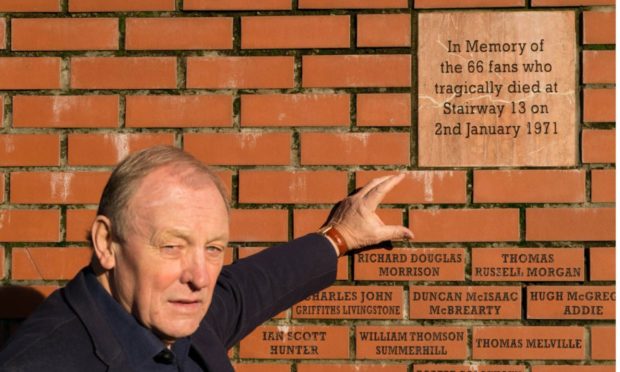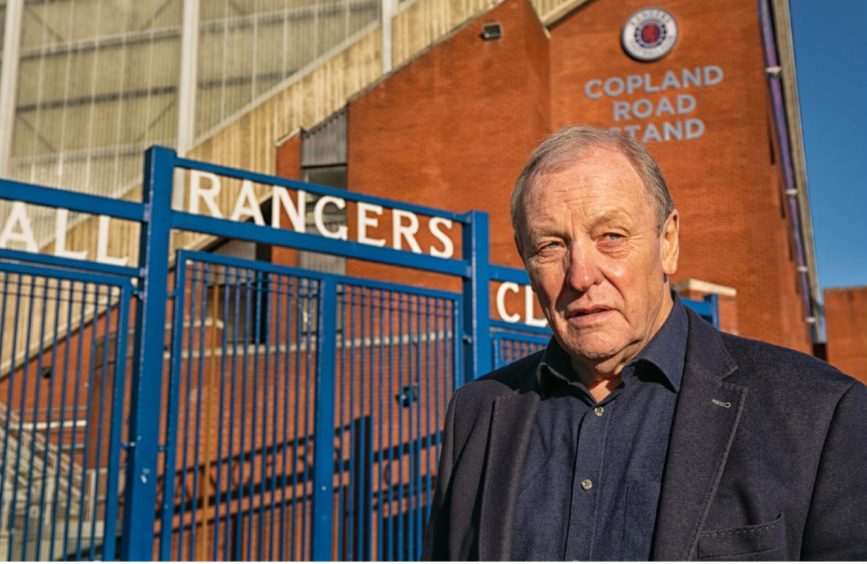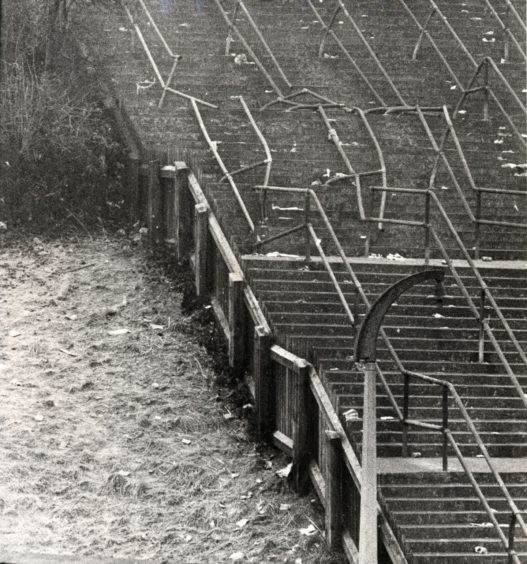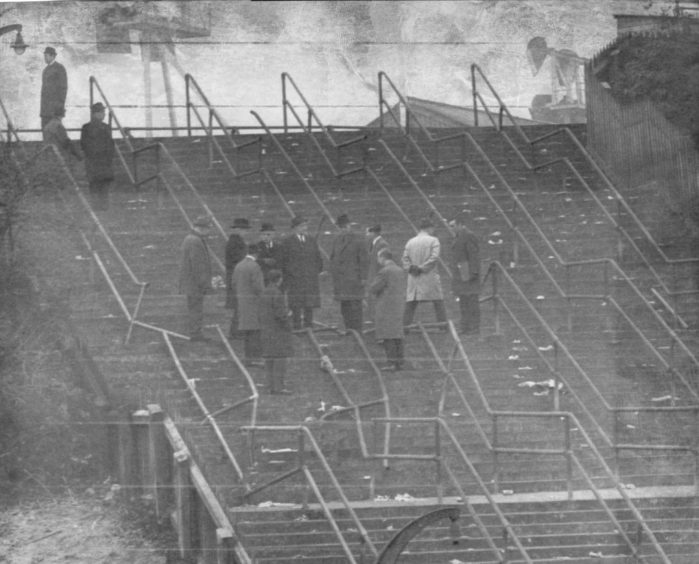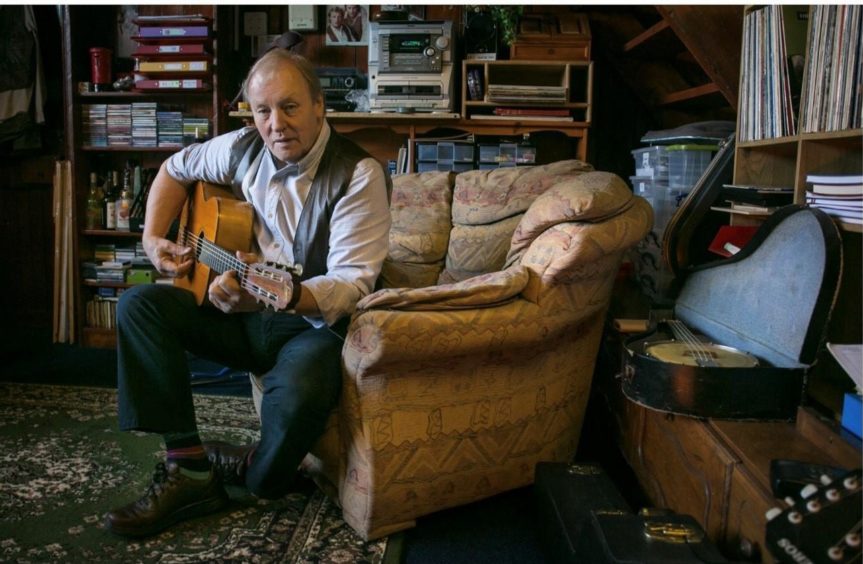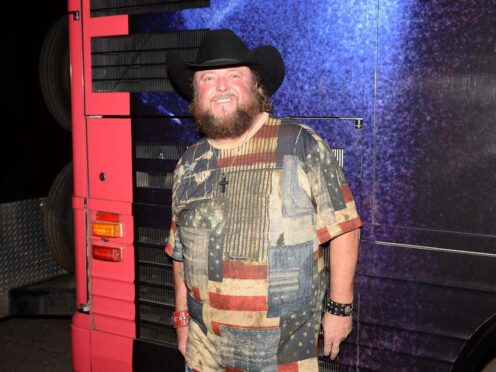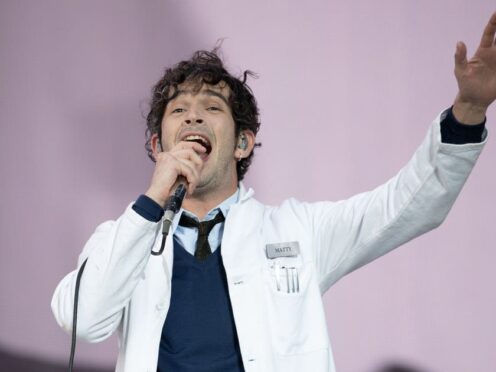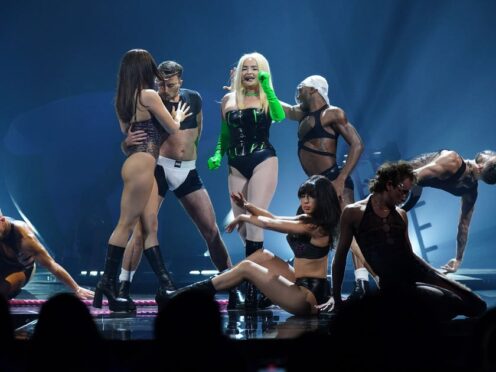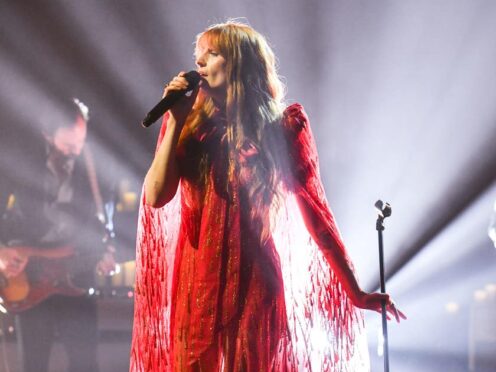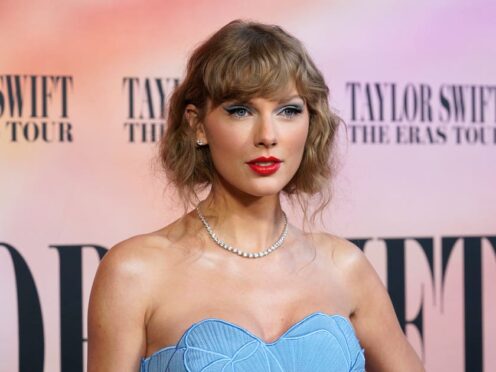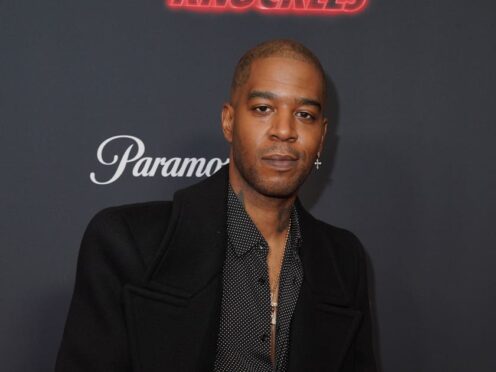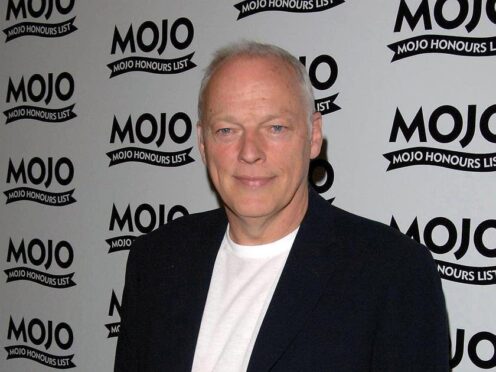Fifty years after the Ibrox Disaster, Michael Alexander speaks to a Perthshire-based folk singer who narrowly avoided being caught up in the tragedy and who’s now released an album that features a song about the accident.
It was the Old Firm derby that ended with the death of 66 fans as they celebrated a late goal.
Fifty years ago on January 2 1971, 66 supporters were killed in a crush at Ibrox stadium in Glasgow after Colin Stein’s equaliser for Rangers cancelled out Jimmy Johnstone’s goal that had given Celtic a 0-1 lead in the 90th minute.
Amongst those who lost their lives in the crush on Stairway 13 were Markinch teenagers Peter Easton, 13, Bryan Todd, 14, Ronald Paton, 14, Mason Philip, 14, and Douglas Morrison, 15.
More than 200 supporters were also injured in what was the worst disaster at a football ground until 96 Liverpool fans were tragically killed at Hillsborough in 1989.
Memories of the disaster
Auchterarder-based folk singer Fraser Bruce, now 73, remembers the Ibrox Disaster well.
In fact, it seems like only yesterday since those events which shocked the world.
Fraser and his best friend Allan Morris, who lived in the west of Scotland at the time, had been given a present of two tickets for the game.
Allan came from a ‘mixed marriage’, which in Glasgow means something different than in other parts of the country!
His Celtic supporting father-in-law had picked up two tickets for the match but they were for the Rangers end of the ground and that was somewhere he just wouldn’t want to be seen.
He was only too pleased to give them away.
On the day, Fraser and Allan called in to The Scotia Bar for a pint before the match.
At the time ‘The Scotia’ was Glasgow’s folk music centre, a place where folksingers gathered, a place where there was always somebody singing or playing an instrument of some form.
The bar was quieter than normal.
However, a ‘session’ was starting to develop with Fraser and Allan at the centre of it.
Leaving it a bit late, the boys asked the bar manager, John Rowan, to call them a taxi to get them to the match in time.
Realising that this might have a negative effect on the ‘session’, John Rowan suggested to Fraser and Allan that if they stayed on, rather than go to the match, then he would keep them going on drinks, at no charge.
This offer was too much for two young men to refuse so they never went to the match.
At about 5pm they did call a taxi as they had made a promise to their wives that they would come back home as soon after the match as possible.
Getting in to the taxi they asked the driver what the score was.
He didn’t know but had heard that Celtic had won.
He switched on his radio and Archie McPherson was just announcing that there were apparently two people dead at Ibrox Park.
As they made their journey home to East Kilbride the numbers kept rising.
“This was in the days before mobile phones,” recalls Fraser.
“There were families throughout the country who were worried as there was no quick way of finding out if their kin were safe.
“It was a terrible time for so many.”
Lucky escape
By the time Fraser and Allan got home the numbers had risen dramatically.
The final death toll was 66 with many more seriously injured.
It wasn’t lost on the pair that had they gone to the match, they too would have been using the stair where the crush happened.
“I’ve often reflected on how lucky we were as we would have been leaving down Stairway 13, the site of the disaster,” says Fraser.
“We would also have been leaving early to avoid the rush, as were those involved in the crush.
Several years ago Fraser wrote a song – Big Al an’ Ibrox – which told the full story of that day – possibly the only time that the fans of Rangers and Celtic were united, because everybody felt the grief.
It has always received emotional responses from his audiences so now he has included it on his most recent album release, Every Song’s A Story which was released by Greentrax Records in November.
Other tracks on the album touch on tragedy as well, from the death of the Celtic goalkeeper John Thomson when he collided with Rangers player Sam English in 1931, to the sinking of the HMY Iolaire on New Year’s Day 1919 at the entrance to Stornoway Harbour, with over 200 lives lost.
On a lighter note there is a song about a proud grandfather out walking with his three year old granddaughter, the emigration of many Scots to Australia on the ‘ten pound ticket’, falling in love at university and the migration of many people from the Highlands and Islands to find work in the cities.
Lifelong interest in folk music
Fraser’s interest in folk music developed when he was at senior secondary school in Rutherglen on the south east side of Glasgow.
At Rutherglen Academy there was a ‘ballads club’ run by a teacher called Norman Buchan, who had a huge interest in politics and who eventually left teaching to become a Labour MP.
This folk club produced many people who went on to have a big influence on the Scottish folk scene of the 1960’s and later.
“Initially my singing was communal with groups of like-minded friends sitting in pubs and clubs singing the popular folk songs of the time,” says Fraser.
“At one such gathering I was picked out by the man who ran two of Scotland’s largest folk clubs – one in Paisley and one in Airdrie.
“He offered me a solo support spot at both clubs.
“This was around 1967/68. It was the start of a semi-professional career that is still active.”
Fraser admits he had no liking for school education and left voluntarily at age 15.
He tried various industries until he found one that interested him.
“I joined a ‘specialist construction company’ and they took me under their wings and trained me in all levels of management skills,” he recalls.
“From assistant manager I worked my way in to a senior post within eight years based between London and Chester and responsible for a huge project within the Nat-West Bank Tower in London.
“All the time I was playing at folk clubs, now as main guest rather than as a support act.”
Big break
In 1971 Fraser was playing at a folk festival in Utrecht in Holland when the managing director of Nevis Records, based in London, approached him and offered him a recording contract.
He recorded two albums with them, ‘Shamrock and Heather’ in 1971 and ‘Fareweel Tae Tarwathie’ in 1975.
They were to be his only ‘solo’ albums until his recently released one ‘Every Song’s a Story’.
“That didn’t mean I wasn’t recording,” laughs Fraser.
“In a mad moment I left my very powerful job to ‘go on the road’ as a full time professional singer.
“I am glad I did otherwise I would always have wondered what might have developed.
“As it was, I hated it. Travelling round airports, trains, driving thousands of miles and often sleeping on the ‘shake-me-down’ beds of well-meaning event organisers.
“When one of my ex-work associates approached me and offered me a senior position within the company that he had formed, I could have bitten his hand off.
“In 1979 I went back to full time employment with my music as a secondary interest.
“I teamed up with my younger brother, Ian and we sang as ‘Mrs Bruce’s Boys’. It went daft. It just took off.
“Within a year we were doing TV and radio work. We were appearing at clubs and festivals up and down the country and we had released our first album on KLUB Records, ‘Mrs Bruce’s Boys – Vol one’.
“It was great and I found that I could fit both careers in. In fact, they were compatible. The pressure of each took away the pressure of the other!”
In August 1986, Fraser set up ‘The Fraser Bruce Group’ and gave up performing completely.
The company thrived and in 2014 he took a step back and handed over the management to his two oldest sons, Euan and Jamie.
That’s when he went back to performing!
Realising that the old days of packed folk clubs were gone, Fraser created a stage show called ‘Auld Hat – New Heids’ with his brother and two other musicians.
However, financially it was difficult to support and they called it a day in 2018.
He discovered he had the ability to write songs, but with nowhere to play them, contacted Greentrax Records which led to the release of his CD.
It’s available to buy from www.GREENTRAX.com
